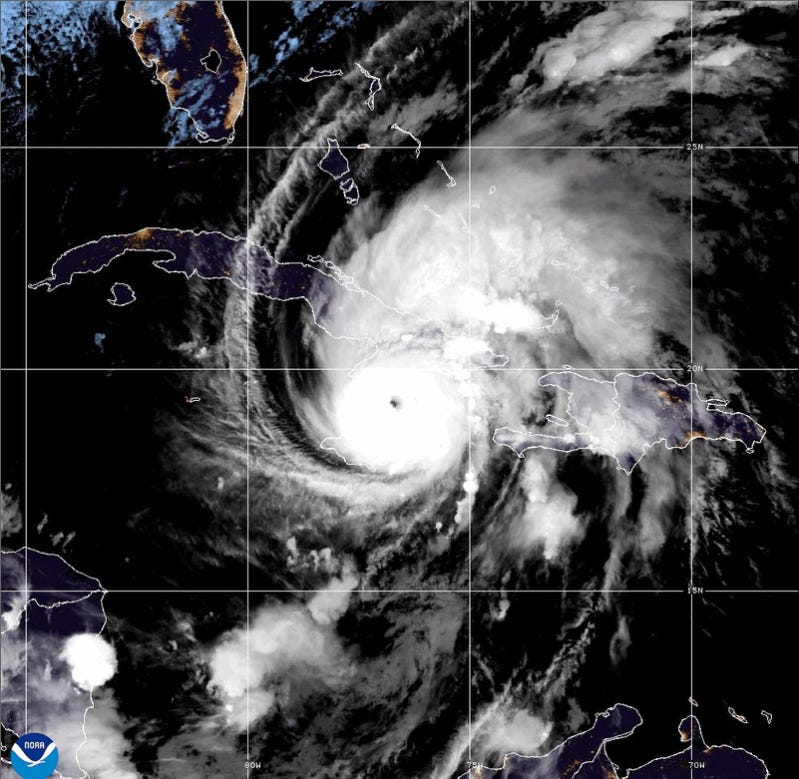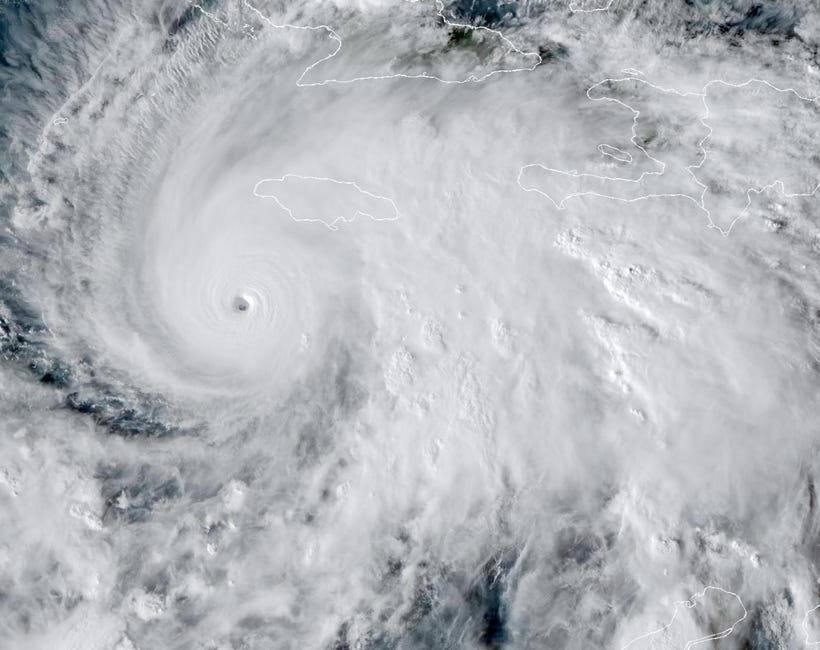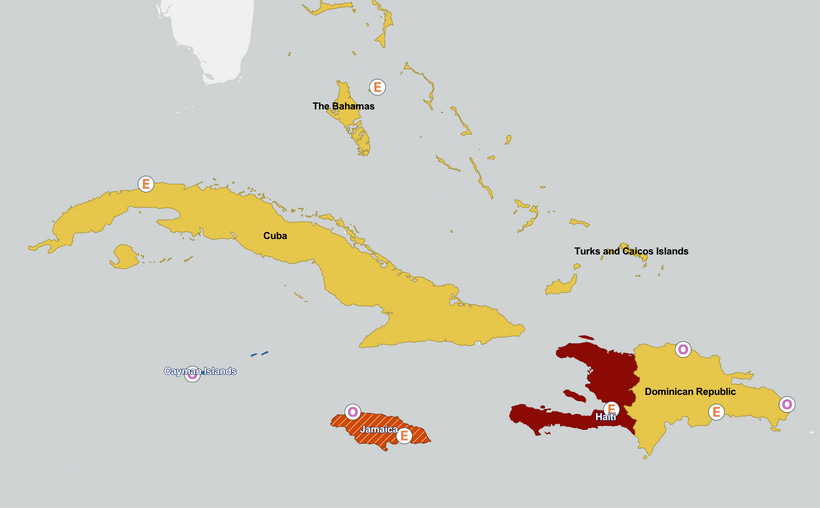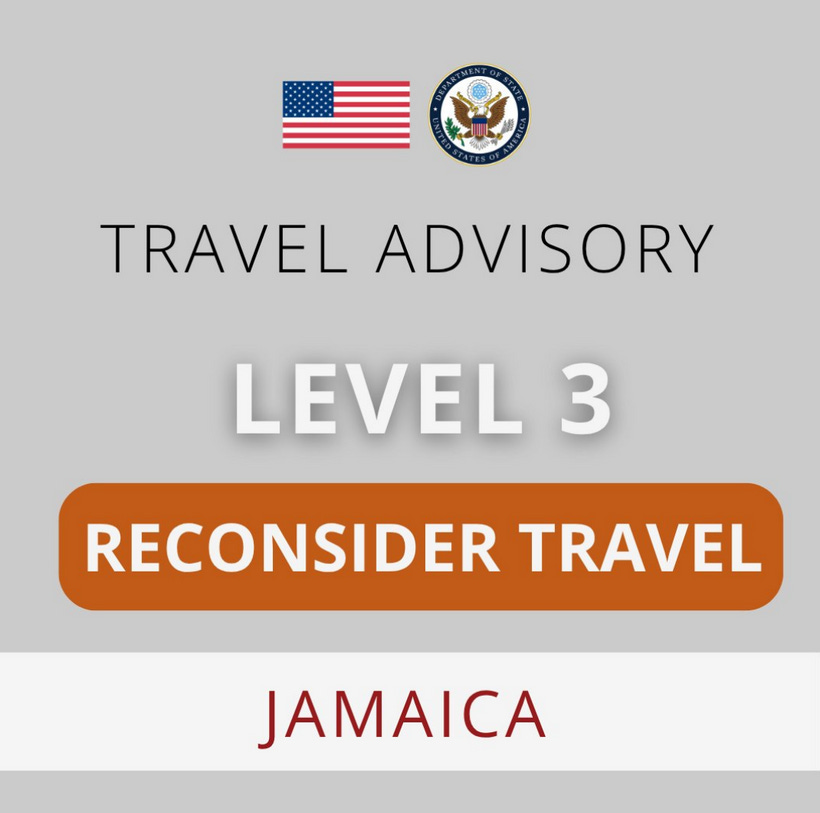Update on Hurricane Melissa Approaching Cuba After Jamaica Landfall and U.S. Travel Advisory
The system made landfall in Jamaica as a Category Five hurricane with 185 mph winds on October 28, 2025, tying the 1935 Labor Day Hurricane for the lowest pressure at landfall in the Atlantic basin.
CARIBBEAN — Hurricane Melissa re-strengthened to Category Four intensity with maximum sustained winds of 130 mph as it approaches eastern Cuba for expected landfall in the next few hours on October 29, 2025.
Hurricane Melissa: Category 5 Intensity in Central Caribbean Sea with Projected Jamaica Landfall
CARIBBEAN — The National Hurricane Center issued Advisory 25 at 1500 UTC on October 27. Hurricane Melissa has reached Category 5 status. It maintains maximum sustained winds of 175 mph (282 kilometers per hour) and a minimum central pressure of 906 millibars.
As of 2:00 a.m. EDT (6:00 a.m. UTC), the center is located near 19.7°N 76.4°W, moving northeast at 10 mph, with conditions expected to deteriorate rapidly in affected areas.
The system made landfall in Jamaica as a Category Five hurricane with 185 mph winds on October 28, 2025, tying the 1935 Labor Day Hurricane for the lowest pressure at landfall in the Atlantic basin. Jamaican authorities report widespread flooding, power outages affecting hundreds of thousands, and telecom disruptions, with relief operations ongoing.
The U.S. Department of State maintains a Level 3 travel advisory for Jamaica due to crime and natural disaster risks.
The hurricane’s eye passed over Jamaica’s rugged terrain, allowing re-intensification over open waters, with increased lightning in the inner core. Forecasts indicate Melissa will cross eastern Cuba on October 29, 2025, potentially weakening due to land interaction but still causing life-threatening storm surge, heavy rainfall up to 40 inches in isolated areas, and damaging winds.
Cuban provinces under hurricane warnings include Granma, Santiago de Cuba, Guantanamo, and Holguin. In Jamaica, the Meteorological Service noted the storm’s northwest shift, leading to catastrophic impacts in western parishes. Network connectivity in Jamaica dropped to 30 percent of normal levels from downed lines and outages.
Medical care in Jamaica remains limited, particularly in rural areas, with slower emergency responses and inadequate facilities for serious illnesses or injuries. Private hospitals demand upfront payment and may lack specialized treatments, while ambulances are frequently understaffed or unavailable.
U.S. citizens should carry extra prescription medications, as common items like insulin are difficult to obtain, and U.S. Medicare or Medicaid does not apply overseas. Air ambulance evacuations to the United States can cost between $30,000 and $50,000, and the Department of State does not cover medical expenses.
Certain areas in Jamaica are designated Level 4, where travel is prohibited due to extreme crime risks. These include:
Neighborhoods in St. Ann’s Parish, such as Steer Town and the Buckfield neighborhood near Ocho Rios.
Spanish Town, Central Village, and specific areas in Portmore within St. Catherine’s Parish.
All of Clarendon Parish except when passing through on the T1 and A2 highways.
Vineyard District Community between Salt Spring and Burnt Savanna in St. Elizabeth’s Parish.
Logwood and Orange Bay in Hanover Parish.
Inland side of the A1 highway and The Queen’s Drive from San San to Harmony Beach Park in St. James Parish/Montego Bay.
Multiple areas in Kingston and St. Andrew Parish, including Cassava Piece, Duhaney Park, Grants Pen, Standpipe, Swallowfield, Elleston Flats, and downtown Kingston regions.
Green Vale and Gray Ground neighborhoods in Manchester Parish.
Black Lane neighborhood in Seaforth, Grands Penn, Church Corner neighborhood near Yallahs, town of Yallahs, except when driving through on the main highway in St. Thomas Parish.
Clarks Town in Trelawny Parish.
Russia community in Savanna-la-Mar, Morgan Bay, Kings Valley, The Whitehall, Bethel Town, and Red Ground neighborhoods in Negril within Westmoreland Parish.
U.S. citizens in Jamaica should adhere to local authority instructions, monitor weather reports, and enroll in the Smart Traveler Enrollment Program for updates. Avoid public buses, driving between cities at night, and remote areas.







